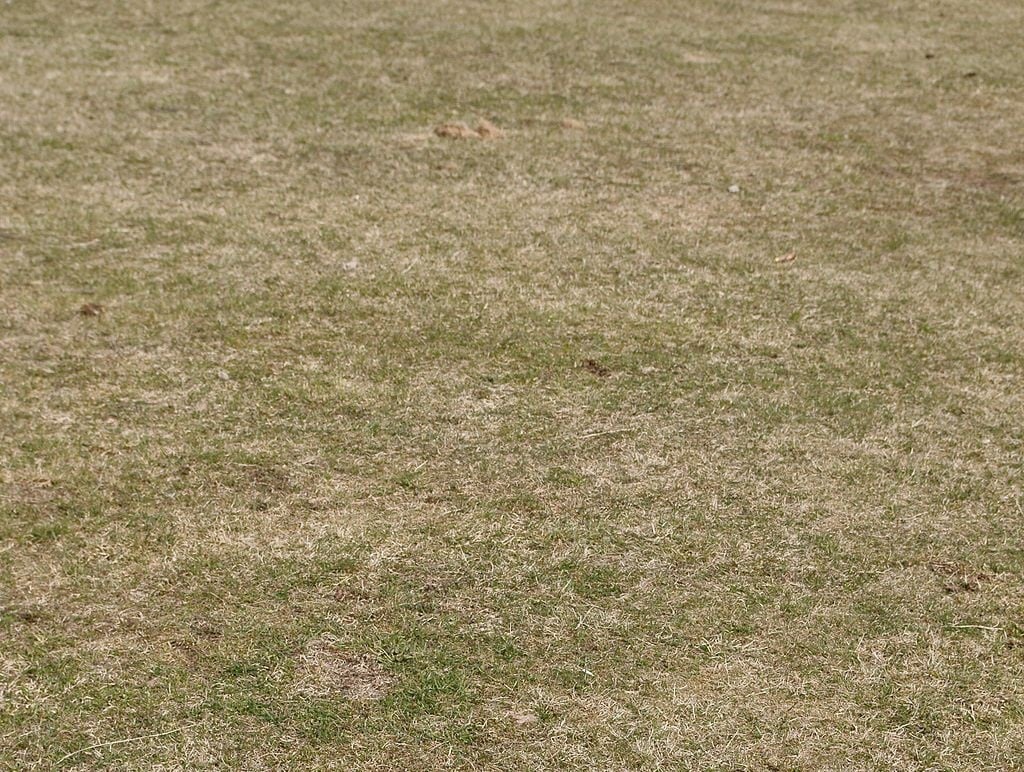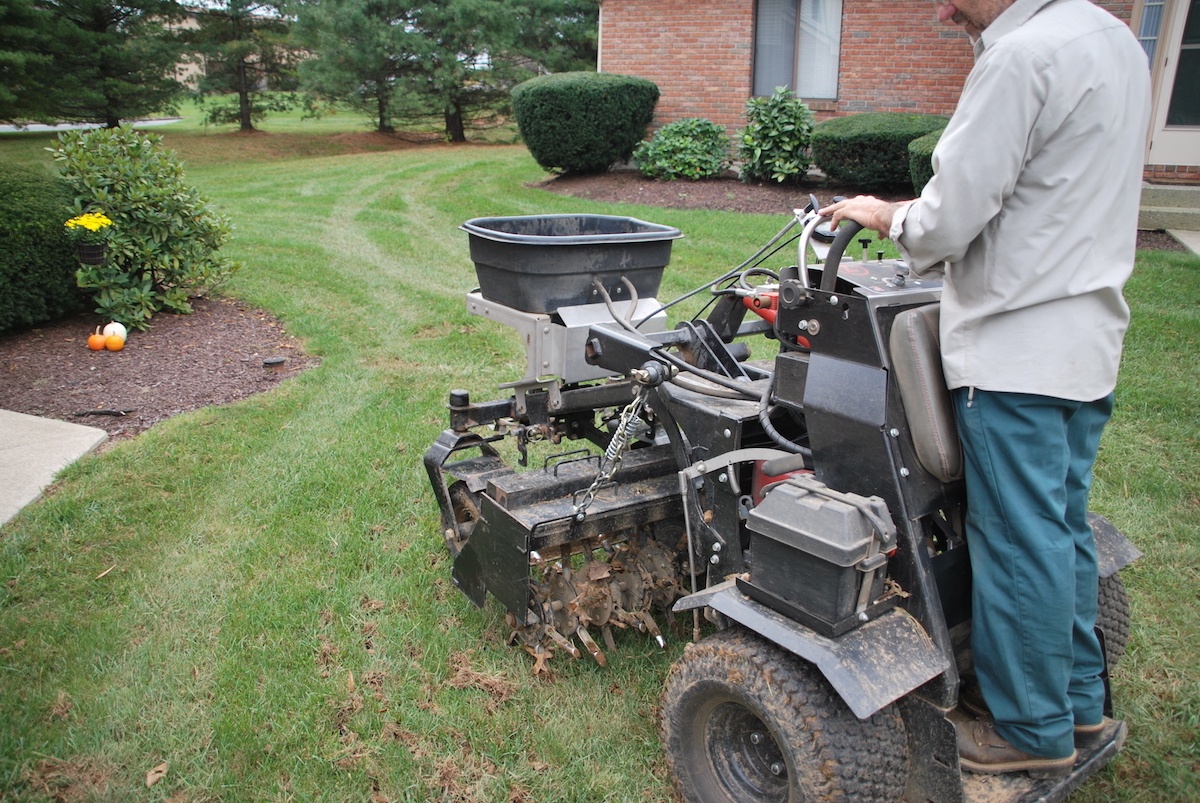All living things need water to survive and your lawn is certainly no exception. That’s why in periods of drought, a lawn can really struggle. To get technical, the lack of water combined with the intense heat interrupts the plant's photosynthesis process. Plus, if grass roots remain dry too long it can ultimately lead to an overall thinning effect or areas not regrowing when conditions improve later.
Although caring for a drought-stressed lawn can feel like an uphill battle, there are some things that you can do to help protect your grass during dry days. Here are some tips on caring for a lawn during drought stress.
1. Be Proactive With Lawn Watering During Drought
With lawn care, being proactive is always better than being reactive. We’ll be honest that fixing drought stress in grass is not always easy, depending on how bad it is. So, if you can take steps to prevent it in the first place, you’ll be much better off.
We are fortunate that weather forecasting technology often allows us to know when drought conditions are coming and provide us with the chance to plan ahead. When you see 85-plus degree days and no call for rain, we’d encourage homeowners to plan to start extra irrigation—even if the lawn looks good.
We can’t emphasize this enough: Do not wait until the lawn looks bad to start watering more. The earlier you start watering your lawn, the better off it will be.
2. Identifying Drought Stress in Grass
While being proactive is the most vital tip that we can offer, we also understand that you might be reading this because your lawn is already experiencing drought stress. We know that things happen. You go away for vacation and you come back to a drought stressed lawn. Or maybe, you got busy at work or with the family and you forgot to do that extra irrigating ahead of drought conditions.

Fortunately, if your lawn is not too far gone, you can still take steps to help it recover.
During the early stages of lawn drought stress, your grass may take on a bluish or gray appearance. You might also start to notice that when you walk across your lawn, the sign of your footprints remain behind. The same might happen with a mower (and mower tracks).
In this stage, your lawn is really dried out but can still recover.
Of course, you’ll want to start watering your lawn. The best method is to use sprinklers which mimic the slow, soaking nature of a light rain. The best time to water is in the early morning, just after the sun rises. At this time of day, it is still cool and the water won’t evaporate too quickly.
Some homeowners panic at the sight of drought stress and overdo it. Do not water to the point of runoff. Runoff is water that the roots cannot absorb. If you’re seeing a lot of runoff, your soil may be compacted. Fall lawn aeration can help alleviate compaction.

You’ll also want to take some TLC with your drought stricken lawn. Mowing is one of those services that can put a lot of added stress on an already-stressed lawn so you want to be extra careful. Mow with sharp blades that make an extra clean cut on your grass.
It’s also better for your grass when you “mow high.” The ideal mowing height for lawns is 3.5 inches. You should also mow to remove only one-third of a blade at a time. Any more than this will stress your lawn even further.
During a drought, it’s a good idea to delay mowing whenever possible, within reason. It’s better to have your lawn just a little long than to keep up frequency and damage it overall. For instance, your springtime interval of every 5 days could easily extend to 8-10 days in some instances where you’re not getting enough rainfall.
3. Understand that Lawn Care in Drought Can Be Challenging
If your lawn is drought-stressed, you have to realize that lawn care products may not be as effective as normal. Drought can make it challenging for weed control products to work as weeds need to be actively growing for the products to do their job.
In addition, periods of drought are going to bring other lawn care stressors to light. As your lawn struggles to deal with a lack of water, pests like surface-feeding insects might see their opportunity to feed. Damage is also going to become more noticeable as a vigorously growing turf will mask symptoms.
Fortunately, if you do have a lawn care program in place, preventative steps will likely have already been taken to address any of these added stressors that can really wreak havoc on your lawn in times of drought.
4. Fixing a Drought Damaged Lawn
How to repair a drought damaged lawn is going to depend upon how bad it is. As we mentioned, a lawn that is discolored and showing footprints or tire tracks is in the early stages of drought stress and can bounce back with watering and some TLC. However, a lawn that has begun to turn brown and is in “pre-dormancy” will take more time and care.
A lawn in pre-dormancy will turn dull and brown. But with ample water, it can bounce back. However, a lawn that has gone completely dormant and turned wholly brown may be more difficult to restore.
Deep and repeated watering can help in restoration efforts but you might have to accept that at least some areas of your lawn (particularly any that thinned out and definitely those that have become bare patches) have likely reached a point of no return.
While that particular grass may be dead, you can take steps to regrow your lawn with aeration and overseeding. These services are powerful and can transform a lawn with brown and bare patches into something new and healthy. We truly believe that aeration and overseeding are two of the most important things that you can do for your lawn’s health.
Just look at these amazing photos. If these services can work on a lawn that has more dirt than grass, then it can certainly work on your drought stressed grass.
Let Joshua Tree Help With Your Drought Stressed Lawn
No matter what stage of drought stress that you’re in, Joshua Tree is here to help—and we’re up to the challenge.
We are available to answer questions but also to step in and aerate and overseed to replace what’s been lost. Even if your lawn is already passed the “point of no return,” aeration and overseeding can provide the restoration you’re looking for.
With the right care for your lawn, you’ll gain valuable peace of mind. If you’re interested in having your lawn inspected and its health assured, contact us for a free quote or give us a call at 833-JTE-TREE.
Image sources: drought damaged lawn



